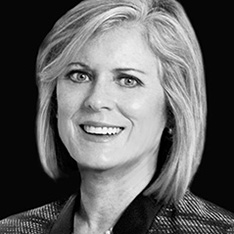Food Halls for All: Transforming Dated Food Courts into Gourmet Destinations
By Karen Raquet, Director of Retail Property Services for JLL Ask an American shopper to name her favorite food hall and the responses will vary. A New Yorker might choose Chelsea Market or Gotham West, but an LA shopper might point to the much-loved Grand Central Market. If you ask a food lover in Des…
 By Karen Raquet, Director of Retail Property Services for JLL
By Karen Raquet, Director of Retail Property Services for JLL
Ask an American shopper to name her favorite food hall and the responses will vary. A New Yorker might choose Chelsea Market or Gotham West, but an LA shopper might point to the much-loved Grand Central Market. If you ask a food lover in Des Moines or Nashville that same question, the response may likely be a blank stare. While the food hall craze is at full frenzy in top tier U.S. cities, the rest of America is still ripe for growth.
Food hall mindshare is growing.
Food hall awareness has grown steadily for at least a decade. The relative popularity of the Google search term “food hall” reveals that the concept is more popular than ever.
Google search data reveal relative mindshare for the term “food hall” is concentrated around New York, Washington DC, Los Angeles and the Bay Area. Cities where celebrity chefs like Mario Batali have dropped their curated food halls to much acclaim.
There are still new ambitious food halls on the horizon in these major markets. In New York, Anthony Bourdain’s Bourdain Market is slated to open in Manhattan in 2017 and will feature over 100 vendors in 155,000 square feet. In Los Angeles, Mario Batali’s first West Coast Eataly will open that same year as a part of Westfield Century City’s $800-million renovation. Taubman’s $500 million renovation of the Beverly Center will see a new food hall called “The Street” curated by celebrity chef Michael Mina in 2018.
Next Stop: Middle America
As the Google search data shows, food halls have yet to penetrate the Middle American mindshare. But as coastal markets become saturated, smart developers, shopping center owners and entrepreneurs will exploit this trend, making foodie destinations out of former food courts, industrial buildings and office lobbies.
New wave food halls have already cropped up in cities like Seattle (Melrose Market,) Denver (The Source) and Atlanta (Krog Street Market, Ponce City Market.) General Growth Properties replaced its food court with a food hall at the Westroads Mall in Omaha in December 2015. Operated by Flagship Restaurant Group, the hall showcases three existing Omaha dining concepts and five new ones.
Further expansion into secondary and tertiary markets is now underway. Portland’s Pine Street Market will open in May. Uptown Urban Market in Dallas is slated for June. Stanley Marketplace in Aurora, Colorado will open this year in a former 140,000-square-foot aviation manufacturing facility. Baltimore’s R. House will open in the shell of an auto showroom this fall. Around that same time, Pizitz Food Hall will open in downtown Birmingham in the shell of a department store. In 2017, Fareground in downtown Austin will open in an office building and Van Aken District Food Hall will open near Cleveland.
Food halls have barely entered consumer consciousness outside a handful of major American cities. With so much untapped demand, there is still plenty of room for growth.
Food Hall, Defined: The term “food hall” originated in Britain, it refers to the large sections of department stores in which food is sold. In the U.S. it has come to represent a newer, fancier gourmet food court that may or may not be a part of a larger shopping center. It often features communal seating and artisanal non-chain vendors with a focus on local ingredients. Food halls are more adult-oriented than food courts and generally feature vendors that serve








You must be logged in to post a comment.